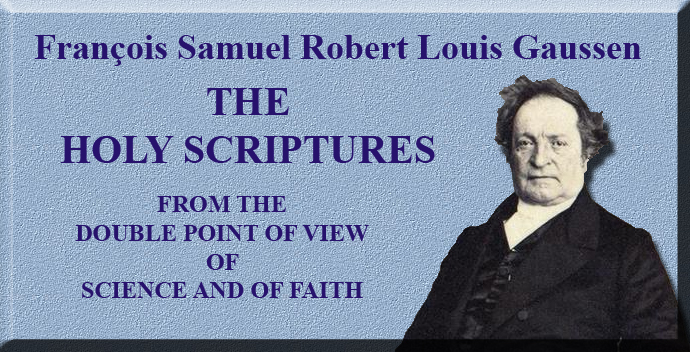
The Holy Scriptures
From the Double Point of View of Science and of Faith
By François Samuel Robert Louis Gaussen
Part First - Canonicity of all Books of the New Testament
Book 1 - Chapter 15
|
INFERENCE FROM ALL THE TESTIMONIES OF THE FIRST FOUR CENTURIES. 103. THREE cardinal facts and three important questions result from this lengthened review, and the combined testimonies of these fourteen catalogues, the bequest of four centuries, and of which the first was put forth at the death of John, about the end of the first century; the second at the death of Irenaeus and of Clement of Alexandria, about the end of the second century; the next at the approach of the fall of Roman paganism, about the end of the third century; and the eleven others, during the fourth, between the time of Eusebius and the death of Gregory of Nazianzus, or the Council of Carthage. 104, In the first place, from the first fact — the constant and universal unanimity of the Churches in maintaining the twenty books of the first canon, this striking fact confirmed from century to century, and denied by none — arises the first question: On what is this constant, free, marvellous, universal unanimity grounded? How was it produced? The answer to this question will form the subject of our Second. Book. It will confirm our reliance in the full authenticity of the first canon; it will increase our respect for the Holy Scriptures, and dispose us to submit more implicitly to their guidance. 105. Along with this first fact, another presents itself, which is, that, besides the twenty books of the first canon, the two epistles which form the second-first canon shared, from their first appearance till the middle of the third century, the same universal recognition as the homologoumena. This second fact gives rise to this second question: Whence originated the objections to these two books after that period? What were the nature and extent of these objections, and how was the authenticity of the second-first canon established after this subsequent and temporary opposition? The answer to this second question will be the subject of our Third Book. 106. Lastly, from the same testimonies results a third fact of no less importance, which is, that the five brief epistles, forming the second canon, and amounting to only a thirty-sixth of the New Testament, though received by most churches, were not, however, received by all, and were universally recognised as of Divine authority only from the date of the Council of Nice, twenty-five years after the close of the third century. Hence arises the third and last question: How is it possible that the antilegomena, if they are authentic, should not have been received from the period of the death of the apostles? How did they come to be received ultimately, and how does it happen that the partial opposition they experienced does not invalidate their authenticity, and even detract from the perfect certainty attributed to the other books of the canon? The answer to the various aspects of this question will form the subject of our Fourth Book. Afterwards, as we have said, we shall, in Part Second, enter on a field’ totally different, and present to our readers a novel class of proofs, in our estimation, still more cogent, in support of the canon. We now pass on to Book Second.
|
|
 |
 |
|
|
|
-
Site Navigation
 Home
Home What's New
What's New Bible
Bible Photos
Photos Hiking
Hiking E-Books
E-Books Genealogy
Genealogy Profile
Free Plug-ins You May Need
Profile
Free Plug-ins You May Need
 Get Java
Get Java.png) Get Flash
Get Flash Get 7-Zip
Get 7-Zip Get Acrobat Reader
Get Acrobat Reader Get TheWORD
Get TheWORD